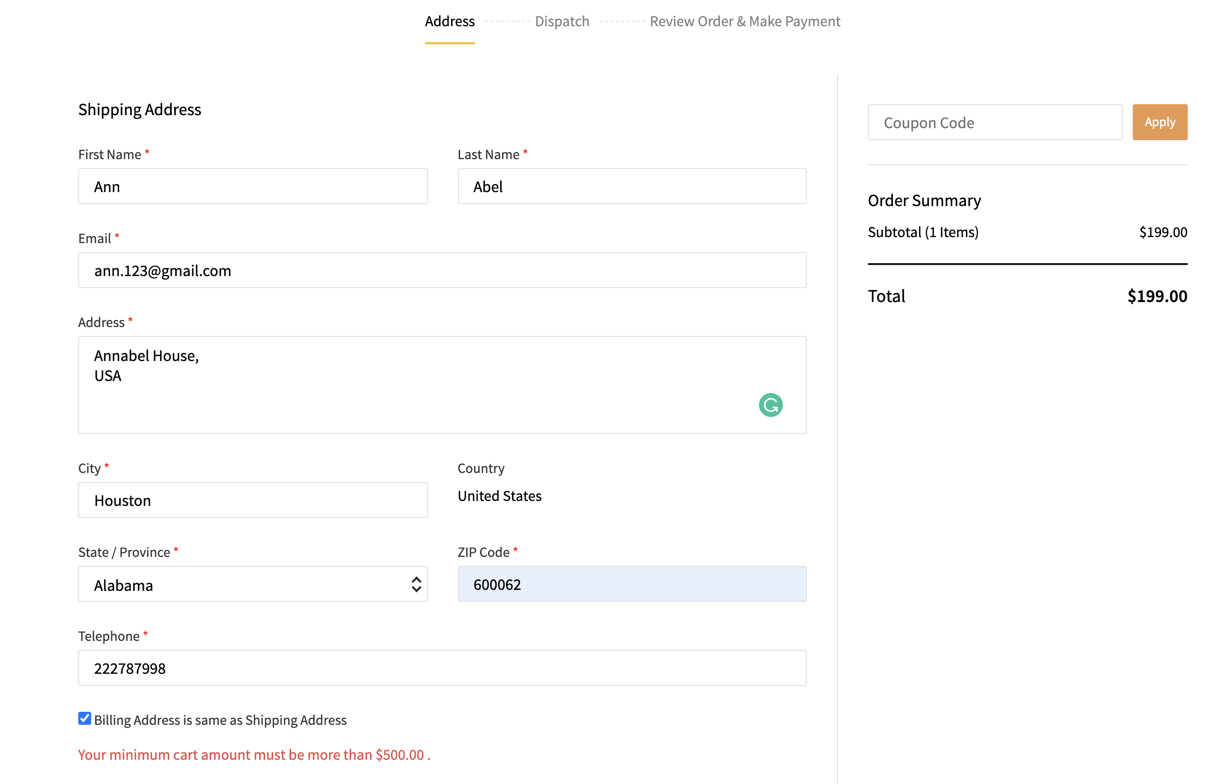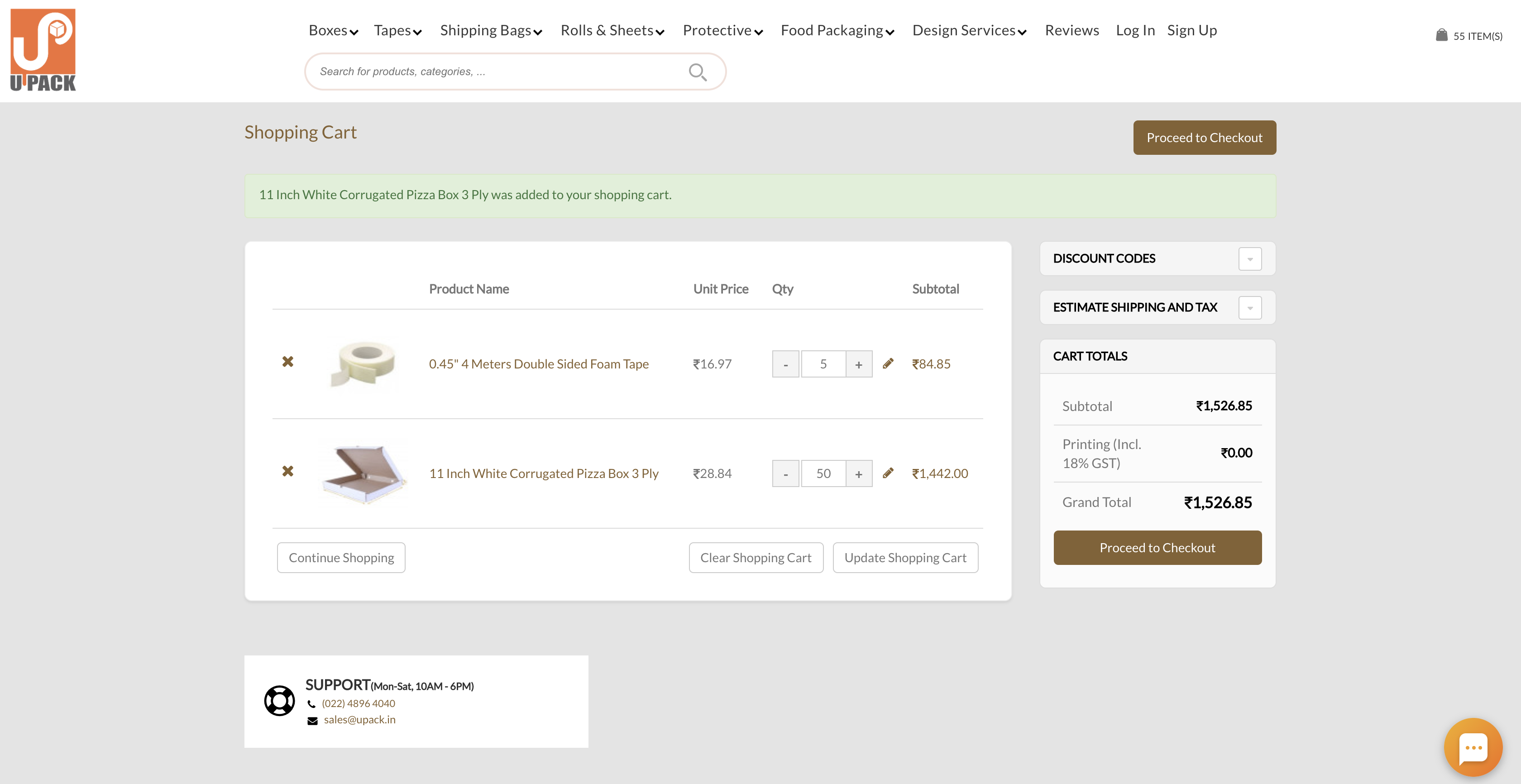- HOME
- Ecommerce operations
- How to use minimum order quantity effectively in your store
How to use minimum order quantity effectively in your store
Pricing is a vital part of a business's strategy. Traditionally, businesses in competitive markets have relied on it to defend and grow their market share. Successful businesses inevitably get pricing "right" — that is, they achieve a mix of delivering value to their customers while simultaneously being profitable themselves.
In ecommerce, businesses depend on technology to maintain the differentiated pricing they usually deliver in offline operations. This calls for the platform to have dynamic control on the value of goods bought and the size of an order to manage allocation of differential prices. For instance, manufacturers normally supply goods at different prices when selling to wholesalers, retailers, and directly to consumers (D2C).
Pricing challenges in ecommerce
Whether you're a manufacturer at the start of a value chain or a retailer at the end of it, you probably operate under a set of market rules. For instance, a manufacturer usually wouldn't sell their goods cheaper direct to the consumer when compared with their wholesale price (manufacturers save time and effort when they make a bulk sale). On the other hand, retailers usually won't discount deeply—doing so cuts into their margins, even if the size of the order is large. Ecommerce needs to operate under a similar set of rules, and owners also need to manage the following:
Technology needs to meet today's demand and also be scalable for the future. Your ecommerce store can be an operational success if it offers tiered pricing for existing and new wholesalers, large retailers, and direct to consumer.
Ease of selling: An ecommerce store is not just a storefront, it is also an opportunity to digitize your business. It can allow you to streamline operations such that all your buyers can use it—whether it be your existing buyers on the wholesale side or new buyers on the D2C side. Consider creating a portal for all your buyers, and not just the online ones. It might take time for you to convince everyone to purchase online, but it will do your business operations a world of good.
Incentivizing correctly: Incentive is an important part of ecommerce, whether it be a price discount to drive sales or a creating a bundle to promote a new product. That being said, you must be clear on why you need an incentive for your store. For instance, if you incentivize customers for volume (minimum order quantity) your inventory turnover will increase. On the other hand, incentivizing for a minimum order value will increase your average ticket size. Nevertheless, being able to increase either is beneficial, as long as you can manage the associated implications.
A case for maximizing value
It's no secret that customers seek value. Rather than forcing existing or potential customers to conform to your understanding of value, why not offer them the best version of what they seek? Help your customers to increase their net sales by offering features that will help their business scale easily:
Minimum order quantity (MOQ): MOQ is generally used when an individual item is unprofitable to process, ship, and deliver. For instance, a pen manufacturer might not want to sell a single pen for the low prices they are known for in the market. As an order quantity of 1 is inefficient, they may want to set a minimum order quantity of 100 on their online store. They might also want to incentivize orders above 10,000 pens by offering a discount.
Minimum order value (MOV): When the catalogue of products is large and varied, store owners might want to incentivize selling the maximum possible range of products, but avoid getting orders with low value products only and lose money on shipping (shipping is based on weight, not value). For instance, a silver craftsman might have products varying from a $2 hair clip to a $2,000 show piece. They might want to implement a $100 MOV, with a discount coupon of 5% for orders above $500 and 10% for orders above $1000.
In this sense, both MOQ and MOV offer solutions for merchants to control the kind of orders they ship and incentivize. This operation strategy gives them more control and helps them maximize business profits.
How to implement MOQ and MOV for your store
Minimum Order Value (MOV)
When a minimum order value is set on your store, customers will need to meet this order value for them to be able to check out. For instance, for an MOV of $150, customers will need to add products worth $150 to their carts before they are able to checkout. Zoho Commerce allows you to define the minimum cart value that you wish to set for your entire store. Every time someone tries to checkout without meeting this value, the system will automatically raise an alert to inform the customer.
Read our help guide to learn how to implement the feature on your store.

Pro tip: Customers sometimes find MOVs annoying. Offer incentives such as free shipping to deliver the perception of value. Also note, with a high MOV, you might trigger higher profits per order, but your total number of orders might reduce, decreasing your overall revenue. Strike a balance by setting a decent MOV, based on the average order value that is generated at your store.
Some loyal customers might complain or stop buying from you altogether. Inform customers in advance of a change in policy. In such cases, free shipping will act as the push factor for customers to meet MOV.
Minimum Order Quantity (MOQ)
With Zoho Commerce, you can set an MOQ for each product individually. For a manufacturer of packaging material, for instance, you might want to set up an MOQ of 20 for packing tape and 100 for packing boxes. The same company might want to set up an MOQ of 500 for pizza boxes! Merchants get to define both the minimum and maximum order size, so they have control over their order sizes and inventory.

Example: Upack uses all the mentioned features in their store. To learn all about implementing this feature on your store, read our help guide.
Conclusion
Making pricing decisions for an ecommerce store depends on the market and the direction the business wants to take. Flexibility in technology is important for most businesses, and Zoho Commerce offers you features to be able to implement decisions quickly and effectively. Use the minimum order value and minimum order quantity parameters on your store to take control of your store operations and deliver a better user experience to the wide audience you cater to.
Commerce Insights is a blog maintained by Zoho Commerce for ecommerce merchants. We discuss topics relating to product features, getting started with ecommerce, and marketing ideas for businesses.
We want you to be a part of this journey in building an ecommerce community. Please send us your thoughts, suggestions, and ideas at marketing@zohocommerce.com.
If you wish to publish an article on the platform, please send it to the same email.
For support-related queries, please write to support@zohocommerce.com.
